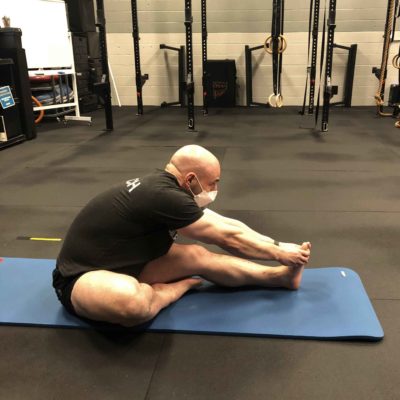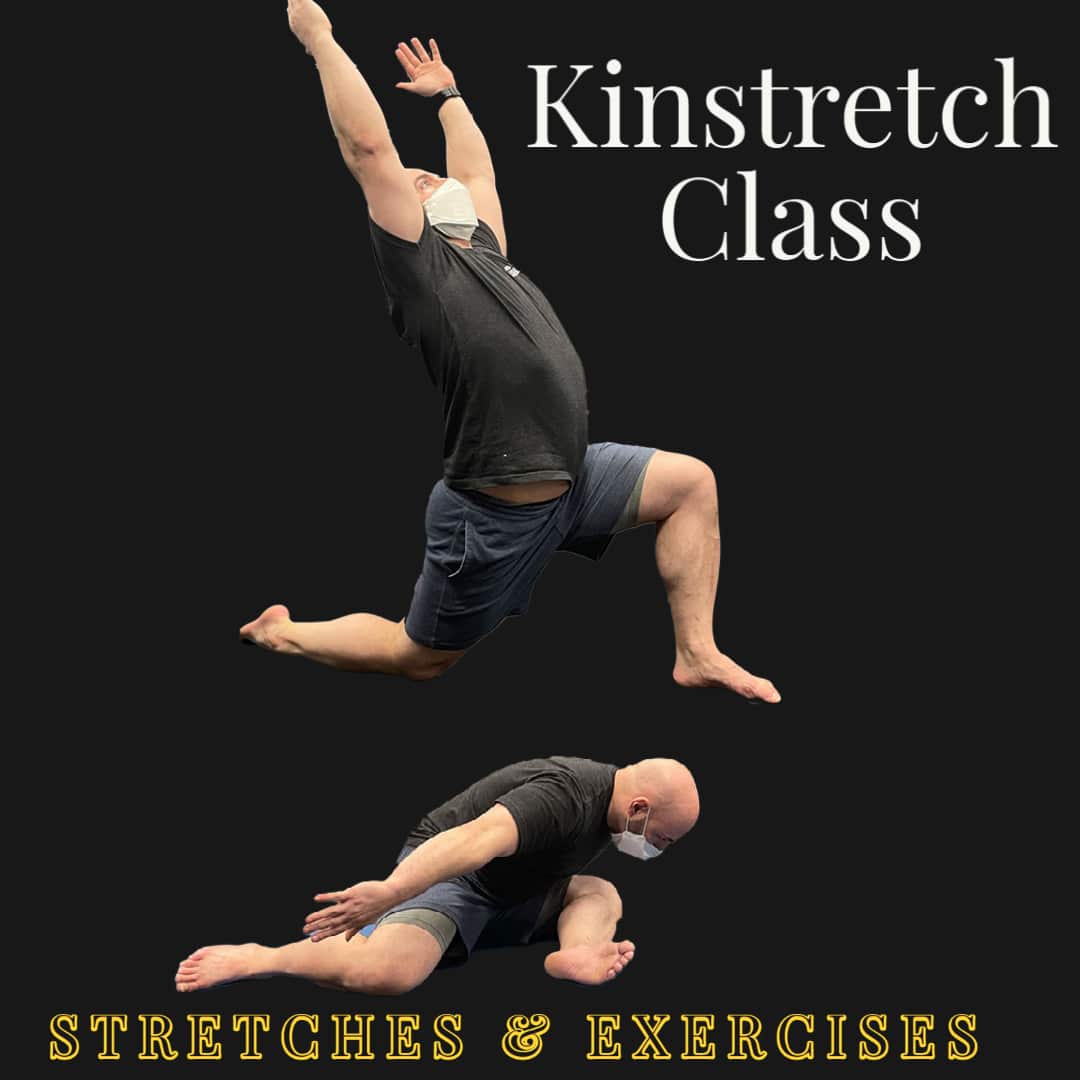Kinstretch Exercises and Stretches. Learn how PAILS, RAILS, CARS, Hinges and Hovers work. A Full List of Kinstretch Stretches & Techniques.
Kinstretch is a practice of improving your range of motion and ability to control that motion safely. In our Beyond Stretch Kinstretch Class we teach you how to build strength in your range of motion so you can run longer, squat safer, and move through life with fewer injuries and less pain.
Kinstretch Exercises and Stretches
There are different training principles in Kinstretch that are applicable in every Beyond Stretch Class. Knowing each concept that is used in class will aid you in understanding the why’s and how’s.
CARS: Controlled Articular Rotations
Kinstretch Stretches
Passive Stretch
Allowing the muscles to stretch using gravity or applying pressure to achieve a deeper stretch. These are the kind of stretches that are frequently done in Yin and Yang based yoga. In Kinstretch, we also base poses like yoga. For the purpose of the article, we will be explaining the various exercise techniques using Figure 4 Pose.
PAILS: Pails Progressive Angular Incremental Load
PAILS involves slowly and deliberately increasing muscle tension in the muscle that being stretch in the passive stretch. In most cases, we are pressing a part of our body against the floor or a wall. So if we are stretching our hamstring in Figure 4 pose, the PAIL would pulling the heel into ground. PAILS are not stretches … they are isometric strength training exercises to maximum effort. PAILS are held from 90 seconds to 3 minutes. PAILS builds strength at end range.
RAILS: Rails Regressive Angular Incremental Load
RAILS use the body regressive tissue to reverse a stretch. So in our Figure 4 example, we would contract the quad and lift the leg as high as we can without leaning back. RAILS are usually held for 10-30 seconds. RAILS builds control at end range.

PRL: Passive Range Lift-Off
In a PRL, we take the body into the furthest range we can safely. For the Figure 4 pose, maybe we have our front leg on a yoga block. We stretch to our end range and lift the leg off the block from the end of our passive range. Hence, passive range lift-off. Usually, the prop is reset to the improved maximal range, and the lift off is repeated several times. Passive Range Lift-Off Increases End Range Distance
PRH: Passive Range Hold
In a PRH, we take the body into maximal range … sometimes through a PRL and passive stretch series. We put the body part into a passive range position with support. In Figure 4 this might be a Yoga block under your heel. And then we remove the support. Once the support is removed, we need to squeeze our muscles to maintain the position without collapsing. Passive Range Holds can be done with a prop or with using our body to create leverage. E.g. if one claps their foot in figure 4 and pulls themselves forward to increase the passive range and remove the clasp, but attempts to hold the stretch — that would be a Passive Range Hold. Passive Range Holds Increases End Range Endurance
ENG: Eccentric Neural Grooving
ENG’s are forced negatives or eccentric motion stretches. In most cases, we set a stretch that is challenging to hold, and we position ourselves so that we can pull ourselves out of the position – forcing the eccentric contraction of the muscle. In figure 4, there is a straight leg and a bent leg. If we lift the hip and then push the hip down with our hand, but we resist the press with our hip adductors, that’s an eccentric neural grooving pattern for the hip. ENGS are typically done in sets of 5-8. ENGS Build Strength through the Range of Motion.
Hovers
Hovers is the practice of lifting a body up over an object. In Figure 4, we might engage the stretch and lift our foot up and over a yoga block. We can use ankle weights to make it harder, or stack the yoga blocks to make the range higher. Hovers are usually done in sets of 10-15. Hovers Build Strength and Control through the Active Range
Kinetic Stretch
Kinetic Stretching involves using our regressive tissue to pull our body into a stretch. So in Figure 4, if we are leaning over our front leg and we try to lift the base leg, your chest will be drawn closer to your leg. Whereas the passive stretch focuses on pulling your chest to your leg, the kinetic stretch pulls your leg to your chest. Since gravity pulls you downward, it will appear that your best is still pulling to your leg though. For this reason, teaching Kinetic Stretching is challenging. What you see on the outside, isn’t a good reflection of what is happening inside the body.
Axial Rotations (Shoulders and Hips)
Axial Rotations are generally combined with Hinges below and other stretches like PRH or ARH. Axial rotations involve rotating the hips or shoulder through their end ranges in different stretches.
Hinges (Knees and Elbows)
Hinges are bending the knees or elbows during stretching to increase the intensity or range of motion of the stretch. Usually, they are performed by not allowing movement of the other joints at the same time. Flex your knee, but don’t let your hip move.
